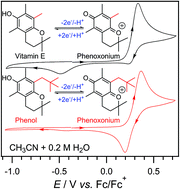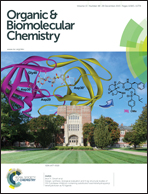Optimizing the lifetimes of phenoxonium cations derived from vitamin E via structural modifications†
Abstract
Systematic synthesis of a number of new phenolic compounds with structures similar to vitamin E led to the identification of several sterically hindered compounds that when electrochemically oxidised in acetonitrile in a –2e−/–H+ process formed phenoxonium diamagnetic cations that were resistant to hydrolysis reactions. The reactivity of the phenoxonium ions was ascertained by performing cyclic voltammetric scans during the addition of carefully controlled quantities of water into acetonitrile solutions, with the data modelled using digital simulation techniques.


 Please wait while we load your content...
Please wait while we load your content...